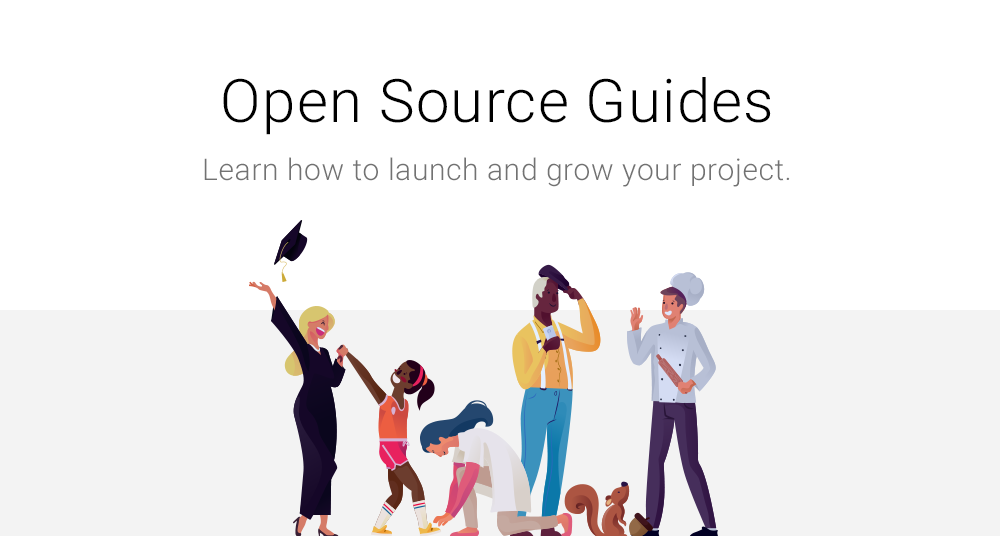How to Start Contributing to Open Source Projects Guide
Open source software forms the backbone of countless technologies, frameworks, and tools used worldwide. Contributing to open source projects not only helps these projects thrive but also provides an excellent opportunity for you to sharpen your skills, collaborate with professionals, and build a strong portfolio. Whether you are a novice programmer or an experienced developer looking to give back to the community, this guide will help you navigate the process of making your first (and subsequent) open source contributions.
1. Understanding the Value of Open Source
Community-Driven: Open source projects are built and maintained by a global community. Contributors work together to improve software, solve problems, and share innovations.
Skill Development: You get hands-on experience with real-world codebases, which can enhance your coding, collaboration, and problem-solving abilities.
Networking Opportunities: You’ll interact with developers, designers, and project managers from around the globe, opening doors to new professional connections.
Building a Portfolio: Every pull request (PR), bug fix, or documentation update you make is public, showcasing your abilities to potential employers or clients.
2. Getting Comfortable with the Basics
Learn Version Control (Git): Git is the standard tool used for collaborating on open source projects. Familiarize yourself with commands such as
clone,commit,branch,pull, andpush.Set Up GitHub (or GitLab, Bitbucket): GitHub is the largest platform for open source collaboration. Create an account, explore repositories, and learn how to navigate pull requests and issues.
Understand Open Source Licenses: Open source licenses govern how software can be used, modified, and distributed. Popular licenses include MIT, Apache 2.0, and GPL. Having a general understanding of these licenses helps you respect the project’s legal boundaries.
3. Finding the Right Project
Identify Your Interests
Look for projects that match your interests or align with tools and languages you already use. This helps maintain motivation and makes the learning curve more enjoyable.Leverage “Beginner-Friendly” Labels
Many repositories label beginner-friendly issues as “good first issue” or “help wanted.” These are specifically curated for newcomers to practice contributing.Check Project Activity
A healthy project usually has recent commits, active issue discussions, and responsive maintainers. Active projects are more likely to welcome new contributors.Browse Platforms and Communities
GitHub’s “Explore” feature
GitLab’s “Explore projects”
Open source directories or aggregator sites
4. Preparing Your Environment
Fork and Clone the Repository: Forking creates your own copy of the project. Cloning it to your local machine allows you to explore the code and make changes.
Read the Documentation: Documentation often includes build instructions, coding standards, and contribution guidelines. Follow these instructions to ensure your environment is set up correctly.
Install Dependencies: Most projects have a list of required libraries or packages. Ensure everything is installed and configured before attempting to build or run tests.
5. Familiarize Yourself with the Project
Read the Code of Conduct: Many repositories have a code of conduct outlining acceptable behavior and communication standards.
Scan Through Issues: Issues (bug reports, feature requests, and tasks) provide insight into project challenges and what needs fixing or improving.
Understand the Project Structure: Spend time browsing the file and folder structure to see how the application is organized.
6. First Contributions
Start Small
Tackle minor bugs or documentation improvements before moving to complex features.
Submit updates to the README or user documentation.
Improve tests or comment on code you understand.
Write Clear Commit Messages
Commit messages should be descriptive. For example, “Fix typo in the contributing guide” is clearer than “Fix stuff.”Open a Pull Request (PR)
Follow the project’s pull request template if provided.
Describe the changes you made and why they’re necessary.
Provide references to issue numbers or relevant discussions.
7. Engaging with the Community
Be Patient and Open to Feedback: Maintainers and reviewers might request changes or reject certain ideas. This is part of the collaborative process.
Ask for Help Politely: If you’re stuck, ask for guidance in the issue comments or discussion forum. People are generally helpful if you’ve shown initiative.
Communicate Respectfully: Always maintain a polite tone in pull requests, issue threads, and chat platforms like Slack or Discord.
8. Developing Your Contribution Skills
Learn Continuous Integration (CI): Many projects use automated tools to test and build contributions. Understanding CI processes (e.g., GitHub Actions, Travis CI) ensures your contributions meet project standards.
Refine Code Review Skills: Reading and reviewing other contributors’ pull requests helps you learn new techniques and best practices.
Explore Advanced Topics: Over time, consider diving into topics like software architecture, security best practices, and project management to become a more valuable contributor.
9. Staying Motivated and Growing
Celebrate Small Wins: Every merged pull request or piece of constructive feedback is progress. Acknowledge each milestone.
Contribute Consistently: Frequent contributions help you gain recognition and trust within the community.
Expand Your Horizons: As you grow more comfortable, experiment with different languages, frameworks, or more complex projects.
10. Conclusion
Contributing to open source is a rewarding journey that offers both personal fulfillment and professional growth. By learning the basics of version control, finding projects you’re passionate about, starting with small tasks, and collaborating respectfully with maintainers, you’ll soon find yourself making meaningful contributions to the open source ecosystem.
References




